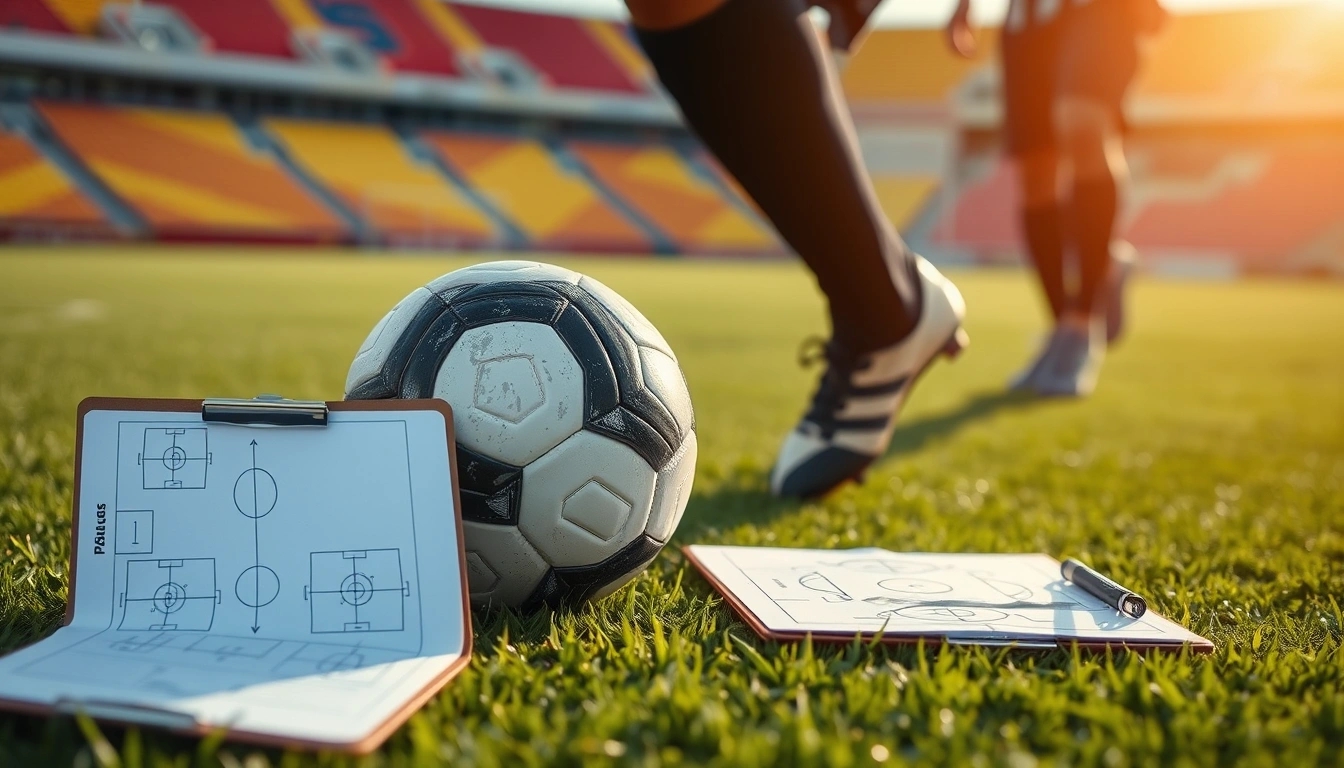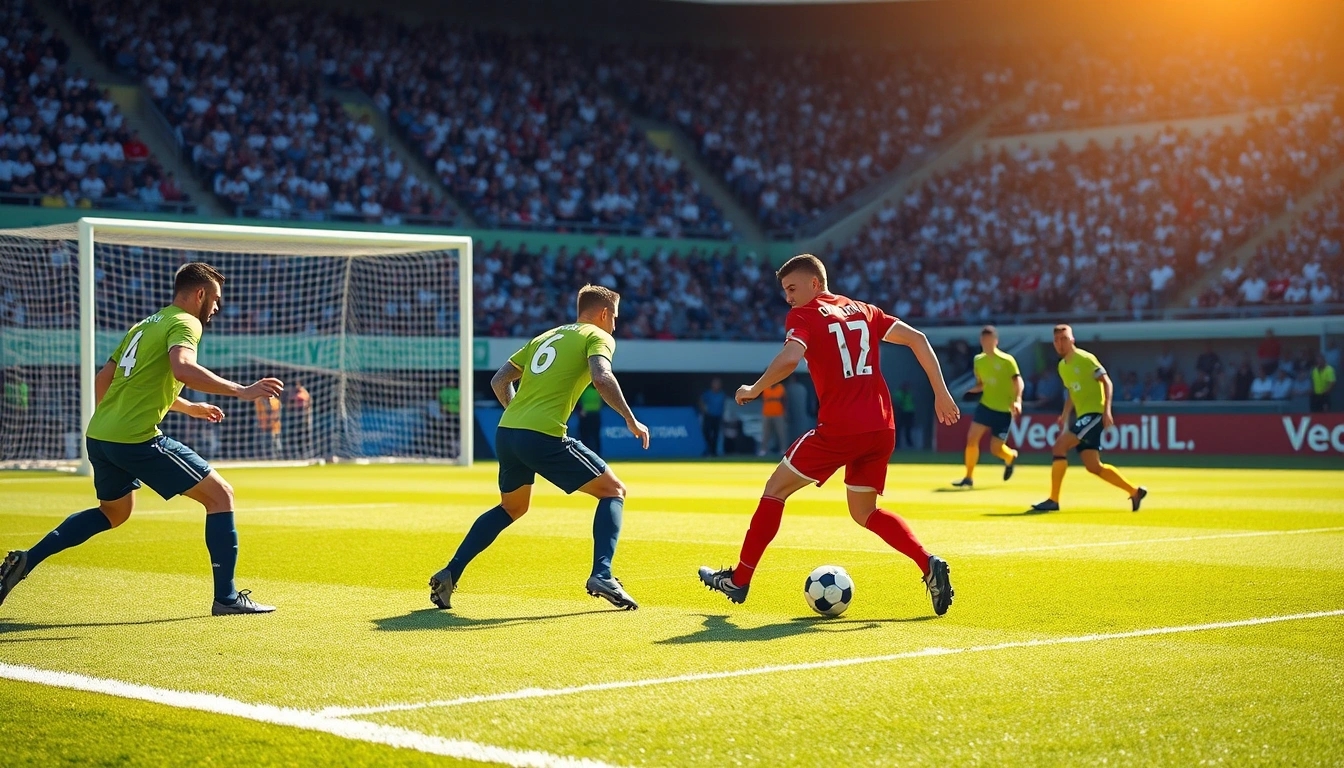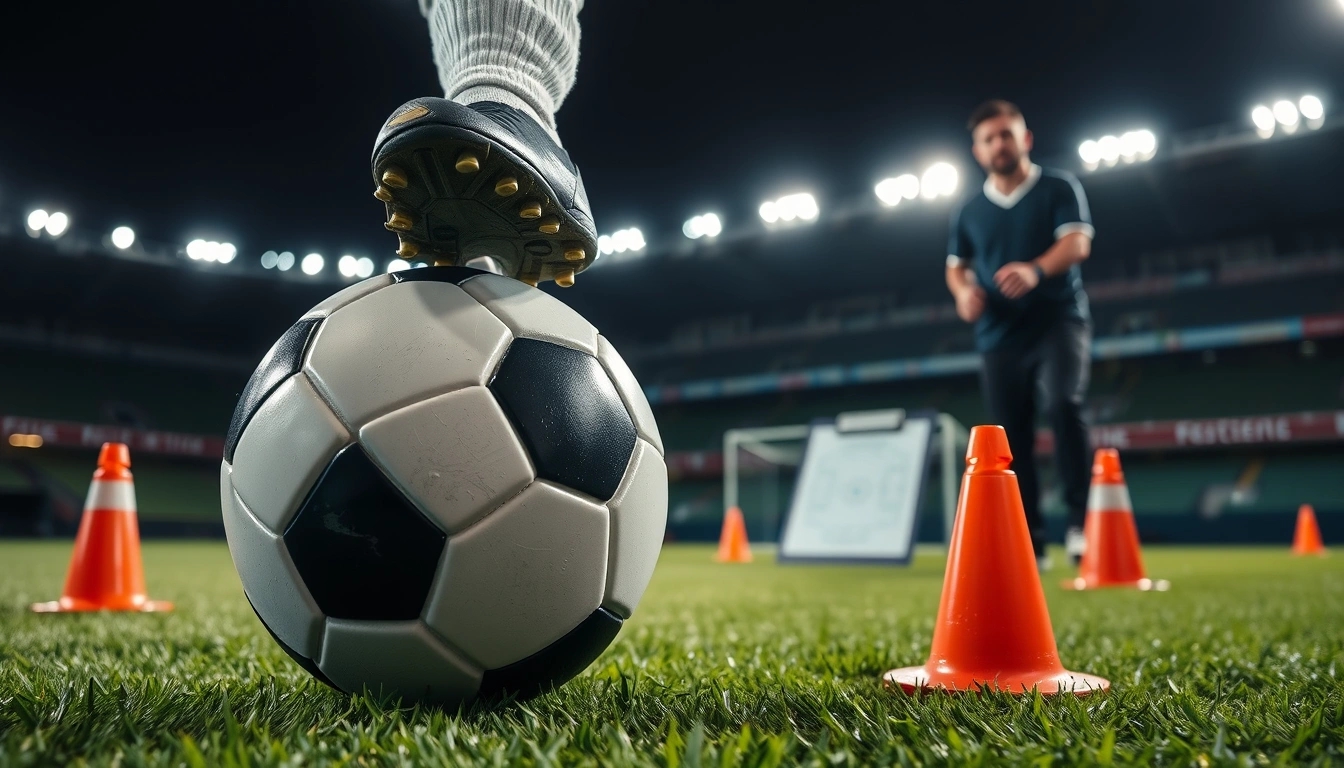Alright, so you’re new to the game and the word “attack” sounds like something out of a superhero movie, but really, it’s just about making things happen on the field. Attacking in sports isn’t just about charging forward like a bull; it’s a mix of brains, guts, and a little bit of luck. Let’s break down the essentials so you don’t feel like you’re drowning the moment you step into offensive territory.
Understanding the Attack Mindset
Before you even think about scoring, you gotta flip the switch from defense mode to attack mode. It’s not just physical; it’s mental. Imagine your brain as a control center where you decide to take risks, be creative, and push forward. If you stay stuck in defensive thinking—“Don’t lose the ball!”—you’ll never really commit to the attack. The mindset here is about confidence and patience. You don’t have to be a speed demon or a magician with the ball to be effective; sometimes outsmarting your opponent is enough.
- Be bold, but not reckless. Attack with purpose.
- Keep your eyes up. Know where your teammates and opponents are.
- Stay cool. Rushing leads to mistakes.
Key Offensive Positions Explained
Not all attackers wear the same hat. Some are strikers, others wingers, and some midfielders play a sneaky offensive role. Knowing who does what helps you understand where you fit in and what’s expected of you.
| Position | Role | Main Responsibility |
|---|---|---|
| Striker | Primary goal scorer | Finish chances, hold up ball |
| Winger | Wide attack | Deliver crosses, beat defenders |
| Attacking Midfielder | Playmaker | Create scoring opportunities |
Fundamental Skills Every Attacker Needs
Dribbling, passing, shooting—sounds simple, right? Well, it’s not always. You need to practice these like your life depends on it (or at least your spot on the team). The key is repetition and focus. Don’t just kick the ball around; work on control, accuracy, and speed.
- Dribbling: Keep the ball close, change direction fast.
- Passing: Precision beats power.
- Shooting: Aim for corners, not just power.
Common Attacking Formations
Formations might sound like boring coach talk, but they shape how your attack flows. The classic 4-3-3 gives you lots of attacking options, while a 4-4-2 is more balanced but can still surprise if you time your runs right.
| Formation | Strength | Weakness |
|---|---|---|
| 4-3-3 | Offensive width and depth | Can leave midfield exposed |
| 4-4-2 | Balance between defense and attack | Less attacking flexibility |
| 3-5-2 | Midfield dominance | Vulnerable on flanks |
Timing Your Runs Like a Pro
Nothing’s more frustrating than getting caught offside or arriving too late to the party. Timing is everything and it comes from reading the game, anticipating passes, and knowing when to sprint or hold back. It’s a skill that develops with experience but start paying attention now.
Using Space to Your Advantage
Space is your best friend. If you’re constantly crowded, good luck scoring. Learn to find gaps, drag defenders out of position, and create your own openings. It sounds tricky, but once you get a feel for it, it’s like having a secret weapon.
Reading the Opponent’s Defense
Attack isn’t just about your team; it’s about outsmarting the other guys. Spotting weak links, slow defenders, or gaps in their shape can turn a decent attack into a goal-scoring chance.
Common Mistakes New Attackers Make
Look, nobody’s perfect. You’ll rush shots, miss passes, or freeze under pressure. The trick is to learn from these mistakes and not let them define you. Patience and practice are your friends.
Drills and Exercises to Boost Attacking Skills
Practice doesn’t have to be dull. Try these:
- 1v1 dribbling drills to beat defenders.
- Passing triangles to improve accuracy and movement.
- Timed shooting exercises for quick decision-making.
In the end, attacking is about mixing skill, smarts, and a little bit of daring. So don’t sweat it if you mess up—every great attacker started somewhere.
Understanding the Attack Mindset
Alright, before you even start dreaming about banging in goals or setting up that killer assist, you need to get your head right. Sounds obvious? Maybe. But switching gears mentally from a defensive, hold-the-line attitude to an all-out, take-no-prisoners attacking mindset is a whole different ball game. Seriously, it’s not just about running faster or kicking harder — it’s about rewiring how you think on the pitch.
When you’re defending, your brain is wired to protect, to anticipate danger, and to react cautiously. But attacking? That’s a different beast. You gotta be bold, creative, and sometimes downright reckless. Imagine this: you’re not just playing the ball, you’re playing the possibilities. Every move, every pass, every run is a calculated risk. And yeah, that means sometimes you’ll mess up spectacularly — but hey, no guts, no glory.
- Shift your focus: Stop thinking about what the opponent might do to you. Instead, think about what you can do to break their defense.
- Embrace unpredictability: If you’re too predictable, defenders will eat you alive. Mix up your moves, keep them guessing.
- Confidence is king: Hesitation kills attacks. Commit to your decisions, even if you’re not 100% sure.
Now, why does this mental switch even matter? Because attacking is as much a psychological game as it is physical. If you’re stuck in defense mode, you’ll hesitate, second-guess, and miss chances. And in sports, chances don’t come knocking twice. It’s like trying to drive a car with the brakes on — you might move, but you’re not going anywhere fast.
| Defensive Mindset | Attacking Mindset |
|---|---|
| Focus on stopping the opponent | Focus on creating opportunities |
| Play safe, minimize risk | Take calculated risks, be daring |
| Reactive and cautious | Proactive and assertive |
| Maintain shape and discipline | Exploit space and break lines |
And here’s a little nugget for you — this mental shift isn’t just for the strikers or midfield maestros. Even defenders who join the attack need to flip this switch. Otherwise, you’re just a passenger in your own team’s offense.
So how do you train your brain to think like an attacker? Start small. Visualize attacking moves during practice. Watch games and notice how attackers think two steps ahead. And don’t be afraid to make mistakes — attacking is messy, unpredictable, and sometimes downright frustrating. But that’s the fun part!
Practical Tips to Develop an Attack Mindset:- Before each game, mentally rehearse attacking scenarios.- Practice quick decision-making drills to reduce hesitation.- Play small-sided games that encourage offensive creativity.- Reflect on your attacking attempts: what worked, what didn’t.
Bottom line? Getting your head in the game means being ready to switch from defense to attack like flipping a light switch — fast, focused, and fearless. Once you master that, scoring won’t just be a dream; it’ll be your new reality.
Key Offensive Positions Explained
Alright, so you’re diving into the wild world of attacking positions in sports, and let me tell you — it’s not as straightforward as just “go and score.” Different attackers have different jobs, and lumping them all together is like saying every fruit tastes the same. Spoiler alert: they don’t. So, buckle up as we break down the main offensive roles and what makes each one tick.
Striker (The Goal Hunter)
This guy’s the star of the show, often the one everyone expects to bag the goals. Their main responsibility? Put the ball in the net, preferably with style. Quick feet, sharp shooting, and a nose for goal are must-haves. But don’t think it’s just about standing in the box waiting for a gift — strikers need to read the game, make smart runs, and sometimes even drop back to help midfield. It’s a high-pressure gig, but hey, someone’s gotta do it.
Wingers (The Speed Demons)
Think of wingers as the team’s secret weapon on the flanks. Their job? Stretch the defense, beat defenders with pace and skill, and whip in crosses that make strikers’ lives easier. They’re often lightning fast and tricky dribblers, but also need to track back and help out defensively. So, yeah, it’s a love-hate relationship — sprint up and down the sidelines all game.
| Position | Main Responsibilities | Key Skills |
|---|---|---|
| Striker | Score goals, make runs behind defense, hold up play | Finishing, positioning, composure |
| Winger | Beat defenders, deliver crosses, support defense | Speed, dribbling, crossing |
| Attacking Midfielder | Create chances, link midfield and attack, take shots | Vision, passing, creativity |
Attacking Midfielder (The Playmaker)
Now, this position is where the magic happens. The attacking midfielder is like the team’s chess player, always thinking two steps ahead. Their role is to create scoring opportunities, thread killer passes, and sometimes just take a cheeky shot themselves. They’re not just about flair — it’s about reading the game and making split-second decisions. If you’re the kind of player who loves being in the thick of things, this might be your spot.
- Role Confusion? Here’s a quick tip: The striker is your finisher, the winger is your wide attacker, and the attacking midfielder is your creative brain.
- Remember: These roles can overlap, and players often switch hats mid-game. Flexibility is key!
Honestly, the beauty of attacking positions is that no two players play them exactly the same. Some strikers are target men, others are speedsters. Wingers could be wide forwards or traditional crossers. And attacking midfielders? They range from deep-lying creators to goal-scoring threats.
So next time you watch a game, try to spot these roles doing their thing — and maybe, just maybe, you’ll get a better feel for why attacking is way more than just “kick it and hope.” It’s a craft, a mindset, and a bit of chaos all rolled into one.
Quick Recap:
- Striker: Goal scorer, main finisher.- Winger: Wide attacker, pace and crossing.- Attacking Midfielder: Creator, link-up play.
Keep these in mind, and you’re already a step closer to understanding the beautiful madness of offensive play.

Fundamental Skills Every Attacker Needs
Dribbling, passing, shooting—sounds like the holy trinity of attacking, right? Well, if you think it’s as easy as pie, think again. These skills might look straightforward when you watch the pros glide across the pitch, but trust me, there’s a world of sweat and frustration behind every slick move. Let’s break down these essentials and toss in some tips on how to actually get good at them without losing your mind.
Dribbling: The art of weaving through defenders while keeping the ball glued to your feet. Sounds fancy, but it’s mostly about control and confidence. Beginners often make the mistake of looking down at the ball every two seconds—big no-no. Instead, try to develop a feel for the ball with your feet so you can keep your head up and spot opportunities.
- Practice tip: Set up cones and try to dribble through them using both feet. Start slow, then speed up as you get comfortable.
- Pro tip: Use the inside, outside, and sole of your foot to change direction. Variety keeps defenders guessing.
Passing: If dribbling is the solo act, passing is the team player’s bread and butter. It’s not just about kicking the ball to a teammate; it’s about timing, accuracy, and reading the game. A bad pass can kill an attack faster than you can say “oops.”
| Type of Pass | When to Use | Common Mistake |
|---|---|---|
| Short Pass | Close range, maintain possession | Passing too hard or too soft |
| Through Ball | Breaking defensive lines | Not timing it with the runner’s movement |
| Cross | Delivering into the box | Inaccurate placement, making it easy for defenders |
Shooting: Ah, the moment every attacker lives for—the chance to put the ball in the back of the net. But shooting isn’t just about power; it’s about placement, timing, and sometimes a little bit of luck. Beginners often blast the ball without thinking, ending up with shots that sail over the bar or straight into the keeper’s hands.
- Practice tip: Work on shooting with both feet. Being one-footed is like bringing a spoon to a knife fight.
- Fun fact: Aim for the corners, not the middle. It’s harder for the keeper to reach and increases your chances of scoring.
Look, mastering these skills won’t happen overnight. You’ll mess up, trip over your own feet, and probably get frustrated more times than you can count. But that’s part of the game. Keep at it, mix up your practice sessions with drills and real-game scenarios, and slowly but surely, you’ll start to see improvement. Remember, even the best attackers started just like you—awkward, unsure, and probably wondering if they’d ever get the hang of it.
So, lace up those boots, hit the field, and don’t be afraid to make mistakes. Because in the end, every slip-up is just another step toward becoming the attacker you want to be.
Common Attacking Formations
When it comes to attacking in sports, especially in games like soccer or hockey, formations aren’t just about looking fancy on paper—they can totally make or break your team’s offensive mojo. You can have the flashiest players on the pitch, but if your setup is all over the place, good luck trying to score. So, let’s dive into some popular attacking formations and why they matter more than you might think.
First off, think of formations like the blueprint for your attack. They tell everyone where to be, when to move, and how to link up. Without a solid plan, your forwards might just be wandering around like lost tourists in a foreign city—lots of running but zero results. For instance, the classic 4-3-3 formation is a favorite because it balances attack and midfield support. You’ve got three forwards upfront, which means constant pressure on the defense, but also three midfielders ready to feed those strikers with killer passes.
| Formation | Strengths | Weaknesses |
|---|---|---|
| 4-3-3 | Strong wing play, balanced midfield | Can be vulnerable on counters |
| 3-5-2 | Midfield domination, two strikers | Requires fit wing-backs, risky defense |
| 4-2-4 | High attacking pressure, quick transitions | Midfield can get overloaded |
Now, not every formation fits every team or situation. Sometimes, going all out with a 4-2-4 might feel like the right call if you’re desperate for goals, but it’s a gamble because you’re basically leaving your midfield exposed. On the flip side, a 3-5-2 can clog up the midfield and suffocate the opposition, but if your wing-backs don’t have the stamina to track back, you’re asking for trouble.
- Why formations matter: They dictate how your team moves as a unit, ensuring players aren’t just randomly chasing the ball.
- Flexibility is key: Good teams can switch formations mid-game to adapt to what the opponents throw at them.
- Communication is everything: Even the best formation fails if players don’t talk and understand their roles.
Here’s a little secret: formations aren’t set in stone. Coaches tweak them all the time depending on the opponent, weather, or even the mood of the players. A formation that looks great on paper might turn into a mess if players don’t buy into it or if the opposition figures out your plan too quickly.
So, if you’re new to attacking, don’t just memorize formations—try to understand their purpose. Watch how the forwards and midfielders interact, how the defense pushes up or holds back, and how space opens up or gets shut down. The better you get at reading these setups, the more you’ll realize that attacking isn’t just about running fast or shooting hard—it’s a chess game played at lightning speed.
In short, get comfy with formations, but don’t get married to them. Be ready to adapt, experiment, and yes, sometimes fail spectacularly. Because that’s how you learn what works and what’s just a pretty pattern that looks good until the whistle blows.
Timing Your Runs Like a Pro
Alright, let’s get real for a moment. Timing in attacking play? It’s not just important — it’s everything. You can have the skills of Messi or Ronaldo, but if you’re constantly running too early or too late, you might as well be invisible out there. Getting caught offside or arriving late to the party? That’s the kind of rookie mistake that’ll make your coach sigh and your teammates roll their eyes. But hey, don’t sweat it — timing is a skill you can learn, and it’s way more about reading the game than just sprinting like a madman.
- Why Timing Matters: The moment you decide to make your run can either open up a scoring chance or kill the attack dead in its tracks. Run too soon, and the ref’s flag is up before you even get near the ball. Run too late, and the defense has already reset, making your effort pointless.
- Reading the Play: This is where your brain needs to be as sharp as your feet. Watch the ball, watch the defenders, watch your teammates. Anticipate when your teammate is about to pass or when the defense is about to shift.
| Common Timing Mistakes | How to Fix Them |
|---|---|
| Starting runs too early (offside traps) | Practice delaying your run until the ball is released; watch the defenders’ line closely. |
| Starting runs too late (missing chances) | Improve your anticipation by studying teammates’ body language and ball movement. |
| Not adjusting runs based on defense | Learn to change pace and direction quickly to exploit gaps as they appear. |
Here’s a pro tip: timing isn’t just about when you start running, but also how you change your speed during the run. A sudden burst or a subtle slowdown can throw defenders off balance. Imagine you’re sneaking into the box; a little hesitation might trick the defender into thinking you’re not going, then BAM — you accelerate past them. It’s like dancing, but with sweat and bruises.
- Practice Makes Perfect: The easiest way to get your timing right is to practice with your team. Set up drills where you focus solely on making runs that sync perfectly with passes. It sounds boring, but trust me, it’s gold.
- Watch and Learn: Spend some time watching games (not just highlights!). Notice how top forwards time their runs. Sometimes they look like they’re just chilling, but they explode into action at the perfect moment.
Quick Practice Drill:1. Player A holds the ball.2. Player B starts a slow run, watching Player A’s body language.3. Player B accelerates only when Player A looks ready to pass.4. Repeat, switching roles.
Timing your runs is like catching a wave — you gotta feel it, wait for the right moment, and then ride it hard. Miss the wave, and you wipe out. So, next time you’re out there, don’t just run. Think, watch, and strike at the perfect moment. Your chances (and your team) will thank you for it.

Using Space to Your Advantage
Alright, listen up! When it comes to attacking in any sport—be it soccer, basketball, or hockey—space isn’t just some fancy word coaches throw around to sound smart. Space is your secret weapon. Seriously, if you can find it, create it, and exploit it, you’re halfway to scoring before you even touch the ball or puck. But here’s the kicker: space doesn’t just magically appear. You gotta work for it.
- Finding space: This is the first step. Look around. Where are the defenders? Are they clustered or spread out? If they’re tight, that’s a clue—there might be a sneaky gap somewhere, maybe behind a slow defender or between two players who aren’t communicating well.
- Creating space: This is where the art comes in. Use your movement, feints, and quick passes to pull defenders out of position. It’s like playing chess but with your legs. Drag one defender here, force another to follow, and boom—you’ve opened a corridor for your teammate or yourself.
- Exploiting space: Don’t just stare at the gap like it’s a mystery novel. Move into it fast and decisively. Hesitation is the enemy here because defenders will close it down quicker than you can say “goal.”
Now, I know what you’re thinking: “Easier said than done!” And you’re right. It’s a skill that takes practice and a bit of game sense. But here’s a quick table to help you remember the essentials:
| Step | What to Do | Why It Matters |
|---|---|---|
| Find | Scan the field, spot gaps between defenders | Knowing where space is gives you options |
| Create | Use movement, passes, and feints to open gaps | Manipulates defenders and opens new lanes |
| Exploit | Move quickly into space, take your shot or pass | Turns opportunities into scoring chances |
Look, sometimes the defense is tight as a drum, and you think, “There’s no way I’m squeezing through.” Guess what? That’s when teamwork shines. Use give-and-go passes or overlaps to confuse defenders. When one player draws attention, another sneaks into space unnoticed. It’s like a magic trick, except with sweat and shouting.
A quick pro tip: keep your head up and always be aware of your surroundings. Space isn’t just the empty patch of turf; it’s the area you can reach before the defenders do. If you’re glued to the ball or tunnel visioned on one defender, you’ll miss golden opportunities.
Example Drill to Practice Using Space:1. Set up cones to represent defenders.2. Have a teammate pass the ball while you move around the cones.3. Focus on timing your runs into the gaps between cones.4. Increase speed as you get better.
In the end, mastering space is about patience and creativity. It’s about reading the game like a book and then writing your own chapter. So next time you’re out there, don’t just chase the ball—chase the space. Your scoring chances will thank you.
Remember: Space is your best friend in attack. Treat it right, and it’ll set you up for goals like nobody’s business.
Reading the Opponent’s Defense
Attacking isn’t just about charging forward and hoping for the best — nah, it’s a bit more cunning than that. If you want to really make an impact on the field, you gotta outsmart the other team, not just outrun ’em. That means paying close attention to how their defense is set up, spotting where they’re shaky, and then exploiting those cracks like a pro locksmith. Sounds fancy? Well, it’s a skill that can be learned, and here’s the lowdown.
First off, you gotta understand that defenses aren’t perfect — no matter how tough they look. They have patterns, tendencies, and yes, weaknesses. Maybe their left-back is slower than molasses on a cold day, or their center backs don’t communicate well and leave gaps. If you can spot that, you’re already halfway to a goal. But how do you spot these weaknesses without a crystal ball?
- Watch their positioning: Are defenders bunching up too close, leaving space out wide?
- Notice their reactions: Do they panic under pressure or stay calm?
- Track their marking style: Are they sticking tight or giving attackers too much room?
Now, here’s a quick table to help you visualize some common defensive weaknesses and how you might attack them:
| Defensive Weakness | How to Exploit It |
|---|---|
| Slow full-backs | Use quick wingers to run at them and deliver crosses |
| Poor communication | Make overlapping runs to confuse defenders |
| High defensive line | Try through balls and timed runs to catch them offside |
| Weak aerial presence | Focus on low, ground passes and dribbling instead of crosses |
Of course, it’s not just about spotting these weaknesses — you gotta act fast and smart. Hesitation is the killer here. If you see an opening, don’t second guess yourself. That split-second delay can turn a golden chance into a missed opportunity. But hey, nobody’s perfect, so don’t beat yourself up if you fumble the first few times.
Another thing to keep in mind is that defenses adjust. They learn from your moves, so you can’t just do the same trick over and over. Mix it up! One minute you’re exploiting the wings, next you’re pulling defenders out of position with clever passes through the middle. Keep them guessing — that’s how you stay one step ahead.
Practical Tips to Sharpen Your Defense-Reading Skills:
- Watch professional games and focus on how attackers manipulate defenses.
- Practice small-sided games where you can try different attacking moves and see how defenders react.
- Communicate with your teammates — sometimes a quick shout can alert you to a defender’s weakness you hadn’t noticed.
In the end, reading the opponent’s defense isn’t some mystical art reserved for gurus. It’s a mix of observation, quick thinking, and a dash of creativity. So next time you’re out there, don’t just run at the goal like a headless chicken — study, adapt, and strike when the moment’s right. That’s how you turn a good attacker into a great one.
Common Mistakes New Attackers Make
Let’s be real—nobody starts off as a superstar attacker. It’s messy, it’s awkward, and yeah, you’ll trip over your own feet more times than you can count. But hey, that’s part of the game! The key is knowing what traps to avoid before they turn into bad habits. So, buckle up, because here’s a no-nonsense look at some classic blunders new attackers often fall into, and how you can dodge them like a pro.
1. Overthinking Every Move
New attackers tend to freeze up, trying to calculate every possible outcome before making a move. Newsflash: the game doesn’t wait for you to finish your mental checklist. Sometimes, you just gotta trust your gut and act. Hesitation can kill momentum faster than a bad pass.
2. Forgetting to Look Up
This sounds basic, but you’d be surprised how often beginners tunnel vision on the ball. Keeping your head down means missing open teammates, defensive gaps, or even the goal itself. Practice scanning the field regularly—it’s like having a sixth sense for opportunity.
| Typical Mistake | Why It Happens | How to Fix It |
|---|---|---|
| Trying to do it all alone | Overconfidence or lack of trust in teammates | Focus on teamwork, pass more, and communicate |
| Poor timing of runs | Misreading the defense or being impatient | Watch the game flow, practice timing drills |
| Ignoring space | Not understanding positioning | Learn to move into open areas and create gaps |
3. Ball Hogging
Look, you might think you’re the next big thing, but hogging the ball won’t get you far if you’re constantly getting tackled or isolated. Sharing is caring, especially in attack. Passing might not feel as glamorous as scoring, but it’s often the smarter play.
4. Poor Shot Selection
Beginners often try to blast every chance into the net like they’re in an action movie. Spoiler alert: finesse and placement usually beat power. Take a moment to assess your shooting options—sometimes a cheeky chip or a low-driven shot is all you need.
- Tip: Practice shooting with both feet to keep defenders guessing.
- Tip: Work on composure in front of goal—panic shots rarely land.
5. Neglecting Defensive Duties
Attackers sometimes get so caught up in scoring that they forget the other side of the coin: defense. Pressuring opponents, tracking back, and helping out can turn the tide of the game. Don’t be that attacker who vanishes when the team needs you.
Remember:- Mistakes are part of learning.- Watch experienced players and pick up their habits.- Ask for feedback and don’t be shy to fail.
In the end, the biggest mistake is being afraid to make mistakes. Embrace the chaos, keep grinding, and before you know it, those blunders will turn into smart plays. Just don’t expect to nail it all on your first try—because, spoiler, you won’t. And that’s perfectly okay.

Drills and Exercises to Boost Attacking Skills
Alright, listen up! If you’re serious about turning your attacking game from “meh” to “wow,” then you gotta put in the work. No magic wand here, just good old-fashioned drills that actually make a difference. This isn’t some fluff piece telling you to “just practice more” — I’m talking real, practical exercises that’ll sharpen your instincts and technique on the pitch.
First off, let’s get one thing straight: attacking isn’t just about running around wildly hoping to score. It’s a skill, a craft, a bit like cooking — you gotta know your ingredients and how to mix ’em. So here’s a quick rundown of drills that’ll get you moving smarter, not just faster.
| Drill Name | Purpose | How to Do It | Tips |
|---|---|---|---|
| 1v1 Attacking | Improve dribbling and decision-making under pressure | Set up a small grid, face off against a defender, try to beat them and score in a mini goal. | Focus on feints and quick changes of direction. Don’t rush; patience wins. |
| Wall Pass Drill | Enhance quick passing and movement | Pair up, pass the ball against a wall or partner, then sprint into space to receive the return. | Keep passes sharp and eyes up to spot openings. |
| Finishing Under Pressure | Sharpen shooting accuracy when defenders close in | Have a coach or teammate close you down as you receive the ball, then take a shot on goal. | Stay calm, pick your spot, and don’t blast it blindly. |
Now, don’t get me wrong — drills can get boring if you’re not careful. But mixing these up keeps things fresh and your brain guessing. Remember, attacking is as much mental as physical. You gotta train your mind to spot chances and react fast.
- Shadow Runs: Practice your attacking runs without the ball, imagining defenders and gaps. Timing these runs perfectly can be a game-changer.
- Small-Sided Games: Play 3v3 or 4v4 matches focusing on quick transitions and attacking moves. Less space means you gotta think faster.
- Weak Foot Drills: Don’t be that player who only uses one side. Practice dribbling, passing, and shooting with your weaker foot to keep defenders guessing.
Here’s a little secret — even pros screw up sometimes. So don’t beat yourself up if you miss a shot or get caught offside. The key is consistency. A few minutes of focused drills a day beats hours of half-hearted kicking around.
Pro Tip:- Warm up properly before drills to avoid injuries.- Film yourself occasionally to spot mistakes you might miss.- Set small goals: "Today, I’ll nail 5 perfect wall passes" or "I’ll beat my defender twice in 1v1."
In the end, attacking is about creativity and guts. So get out there, mess up, learn, and try again. The more you put in, the more those goals will start piling up — trust me, it’s worth every drop of sweat.
Remember: Practice doesn’t make perfect, but it sure makes you a heck of a lot better.
Frequently Asked Questions
- What mindset should I have when starting to attack in sports?
Shifting from defense to offense can feel like flipping a switch, but it’s more about embracing confidence and creativity. Think of attacking as painting your masterpiece on the field—bold moves and quick decisions are your brushstrokes. Don’t be afraid to take risks; that’s where the magic happens!
- How do different attacking positions affect my role in the game?
Each attacking position is like a unique instrument in an orchestra. Whether you’re a striker leading the charge or a winger creating space, knowing your role helps you harmonize with the team. Understanding these roles keeps you from stepping on toes and maximizes your impact.
- Which fundamental skills should I focus on first?
Start with the basics: dribbling, passing, and shooting. Think of these as your toolkit. Mastering them is like learning to ride a bike—once you get the balance, everything else flows. Practice regularly, and don’t rush; consistency beats speed every time.
- Why are attacking formations important?
Formations are the game’s blueprint. They shape how your team moves and attacks, much like choreography in a dance. Picking the right formation can open up opportunities and confuse defenders, giving your team the upper hand.
- How can I improve my timing when making attacking runs?
Timing is like catching a wave—you need to sense when to paddle and when to ride. Watch the defenders’ movements closely and anticipate the ball’s path. Practicing with teammates helps you sync your runs perfectly, avoiding offsides and maximizing scoring chances.
- What’s the best way to use space effectively during an attack?
Imagine the field as a chessboard; controlling the open squares gives you an advantage. Move smartly to create gaps, draw defenders away, and exploit those openings. Using space cleverly can turn a tight game into your personal playground.
- How do I read the opponent’s defense to improve my attack?
Think like a detective—observe patterns, spot weaknesses, and predict moves. Identifying when defenders are out of position or vulnerable lets you strike at the perfect moment. This strategic insight often separates good attackers from great ones.
- What common mistakes should new attackers avoid?
Rushing shots, ignoring teammates, and poor positioning are classic traps. It’s like trying to sprint before you can walk. Focus on patience, teamwork, and situational awareness to build a strong foundation and avoid these pitfalls.
- Can drills really help boost my attacking skills?
Absolutely! Think of drills as your personal gym for attacking prowess. Repetitive practice sharpens your reflexes and decision-making. Incorporate drills that mimic game scenarios to build confidence and muscle memory.












